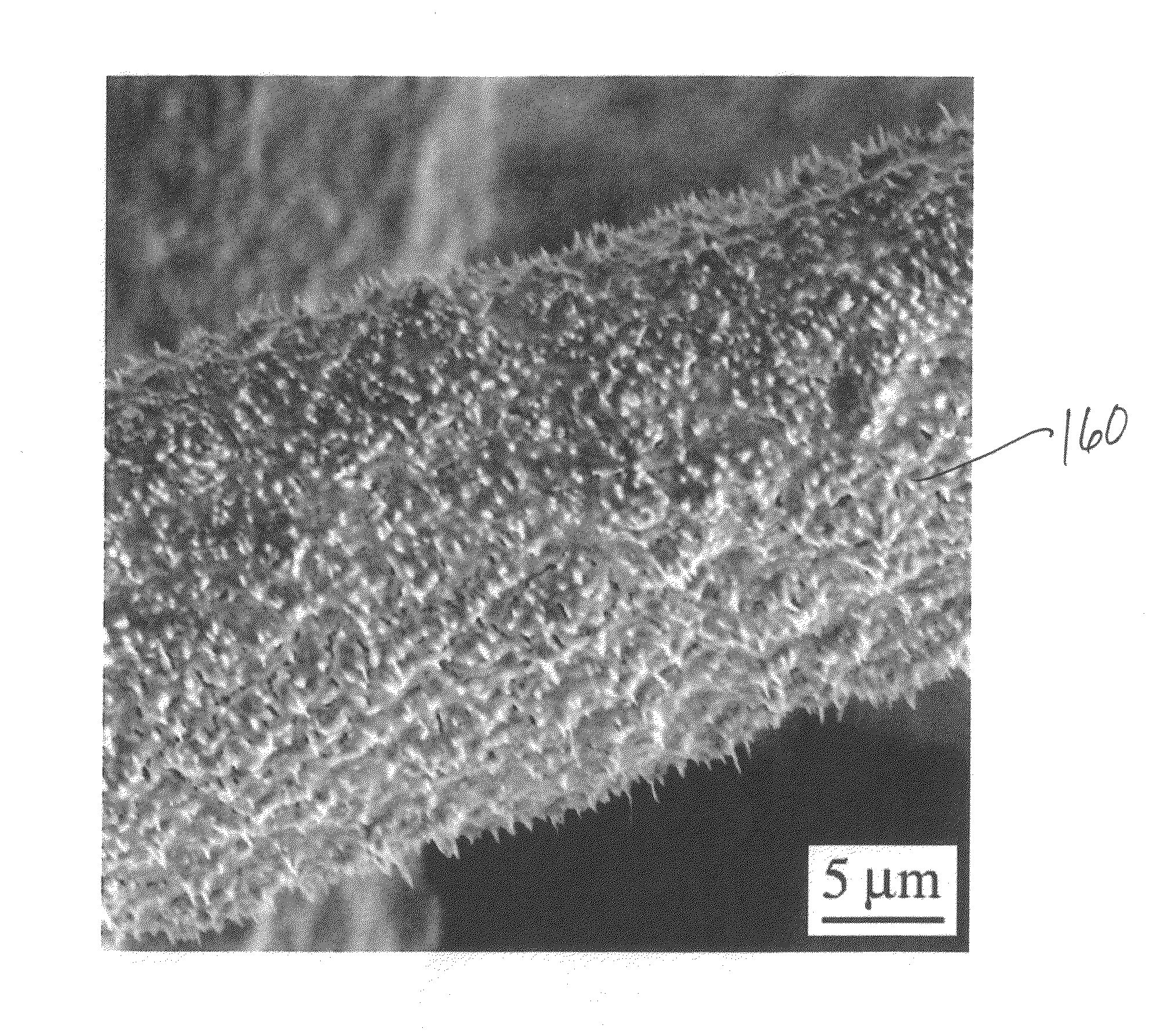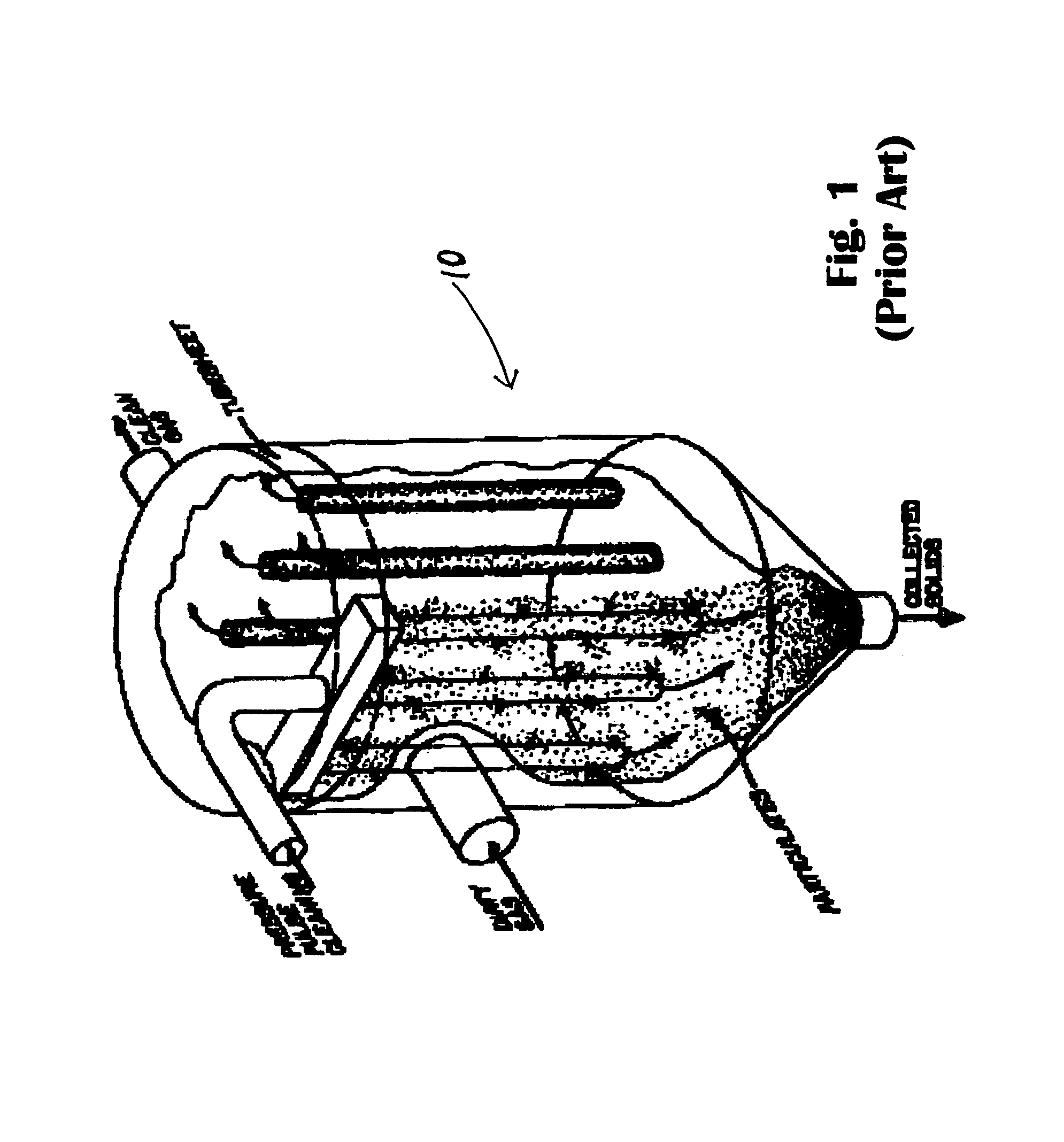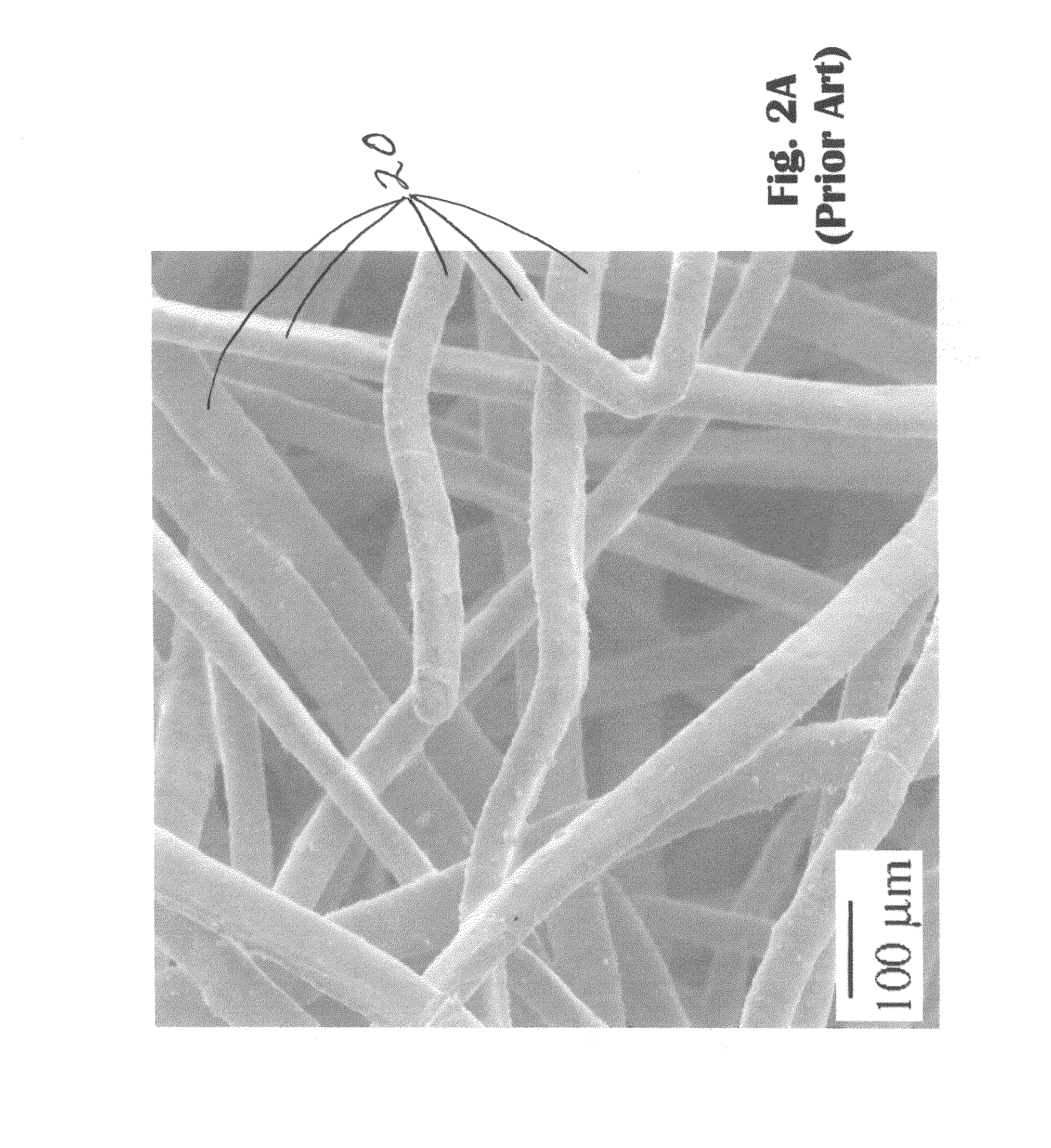Method for whisker formation on metallic fibers and substrates
a technology of metal fibers and substrates, applied in the direction of crystal growth process, polycrystalline material growth, transportation and packaging, etc., can solve the problems of poor or reliable adhesion of catalysts to fiber substrates, and reducing the lifetime of fecral metal alloy fibers. , to achieve the effect of increasing the total surface area
- Summary
- Abstract
- Description
- Claims
- Application Information
AI Technical Summary
Benefits of technology
Problems solved by technology
Method used
Image
Examples
example 1
Coatings with Small Ion Oxides
[0062]A thin layer of sol gel titania (TiO2) is applied on 25 μm FeCrAlY fibers. The comparative mass gain per unit area versus time plots for oxidation of 25 μm FeCrAlY fibers at 915° C. for up to 50 hours, with and without a coating of TiO2 is shown in FIG. 9. The scale morphology was studied by scanning electron micrographs (SEM). FIG. 10A shows an overall view of fibers 100 with a TiO2 coating after firing and FIG. 10B is a zoomed view of the TiO2 coating showing cracks 112, 112a due to “trapped liquid”. FIG. 11 is a scanning electron micrograph of 25 μm FeCrAlY fibers 115 coated with TiO2 and oxidized at 915° C. for approximately 200 hours. FIG. 12 is another scanning electron micrograph of 25 μm FeCrAlY fibers 120 coated with TiO2 after oxidation for approximately 200 hours at 850° C. Scale cross section and thickness were examined using focused ion beam (FIB) at two different magnifications: FIG. 13A—25.0 kX and FIG. 13B—50.0 kX. In FIGS. 13A and...
example 2
Coatings with Large Ion Oxides
[0064]A thin layer of sol gel zirconium oxide (commonly referred to as, zirconia) (ZrO2) is applied on 25 μm FeCrAlY fibers. Then, the coated fiber is heated in air at temperatures from approximately 850° C. to approximately 950° C. for approximately 50 hours to form whiskers. FIGS. 14A and 14B show two SEM micrographs of the finely-whiskered FeCrAl fibers; in FIG. 14A the whiskered fibers 140 are shown at a magnification of 2000×, and in FIG. 14B the whiskered fibers 145 are shown at a magnification of 10000×.
[0065]The formation of alumina whiskers occurred and the transformation of gamma or theta alumina to alpha alumina is delayed by the zirconia coating. Similar results are expected with the use of other large ion oxides such as cerium oxide (CeO2), hafnium oxide (HfO2) and lanthanum (La2O3). Thus, a large ion oxide coating, such as zirconia, allows the formation of alumina whiskers and then transforms gamma or theta alumina to alpha alumina thereby...
PUM
| Property | Measurement | Unit |
|---|---|---|
| Temperature | aaaaa | aaaaa |
| Temperature | aaaaa | aaaaa |
| Temperature | aaaaa | aaaaa |
Abstract
Description
Claims
Application Information
 Login to View More
Login to View More - R&D
- Intellectual Property
- Life Sciences
- Materials
- Tech Scout
- Unparalleled Data Quality
- Higher Quality Content
- 60% Fewer Hallucinations
Browse by: Latest US Patents, China's latest patents, Technical Efficacy Thesaurus, Application Domain, Technology Topic, Popular Technical Reports.
© 2025 PatSnap. All rights reserved.Legal|Privacy policy|Modern Slavery Act Transparency Statement|Sitemap|About US| Contact US: help@patsnap.com



